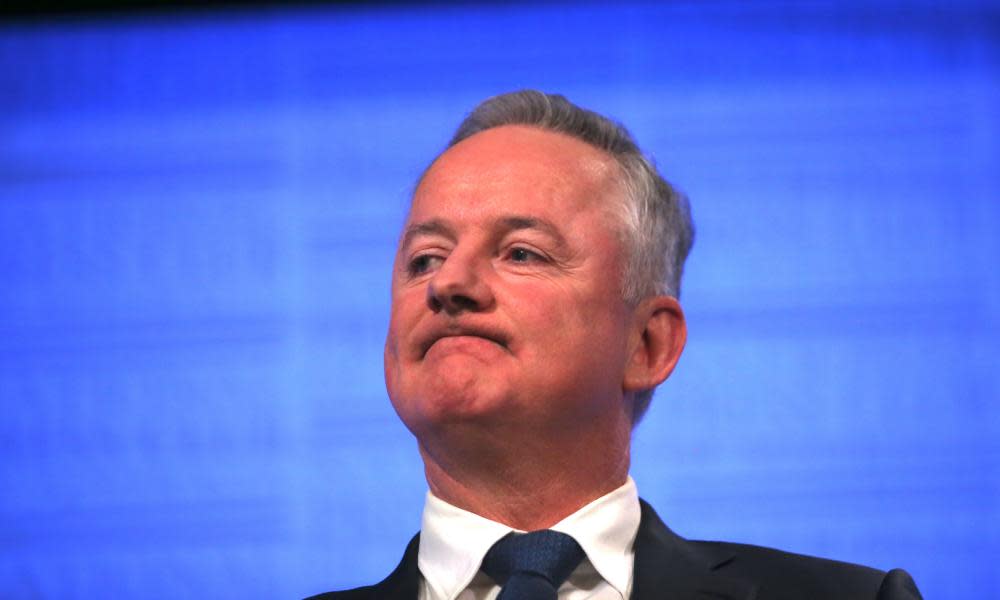Nine could cut Ashes and T20 World Cups from free-to-air TV as profits fall

Nine has identified the Ashes, 2020 men and women’s cricket T20 World Cups and international TV programs as possible targets in a drive to cut $100m out of its struggling free-to-air television business, as the media company reports a 9% drop in profits.
In its first full-year results since the $4bn merger with Fairfax, Nine reported revenue of just under $1.2bn, group Ebitda (pre-tax earnings) of $251m and a net profit after tax of $114m.
#MAFS was the No. 1 streamed program last night and has 11 episodes with a VOD VPM in excess of 300,000 https://t.co/sdpTaxiDkq pic.twitter.com/Bxmm13GLlk
— Nine Comms (@9Comms) February 24, 2020
Nine Entertainment chief executive officer, Hugh Marks, said he is “aggressively transitioning” from linear television and print newspapers to video on demand and subscription models.
Related: 'It was never meant to be journalism': why did the Press Council take on Woman's Day?
Nine is moving away from linear television and “evolving towards digital distribution” because almost 40% of the media company’s earnings now come from digital platforms, including catch-up TV 9Now, streaming platform Stan, real estate brand Domain, and the websites of the Sydney Morning Herald and the Age, Marks said.
Despite competition from new players including Disney+, Apple TV and Amazon Prime, Stan is growing in subscribers and revenue, recording 1.8m subscribers at the end of December.
Nine’s free-to-air channels will concentrate on the more profitable content in a digital era, regular sport like NRL, news and current affairs and local reality shows like Married at First Sight, he said.
The Ashes had “great ratings [which was] not realised into revenue overall” given the high price of the rights, Marks told investors at a half-year results briefing on Wednesday.
“Recognising this company-wide evolution, we believe there is significant potential to refocus the cost structure of our FTA business, targeting the removal of up to $100m in annualised costs over the next 3 years,” Marks said.
Broadcast revenue for Nine dropped 6% for the first half of the financial year, to $531m, while revenue for BVOD [broadcast video on demand] platform 9Now jumped 44% to $42m.
Weak advertising and property markets were blamed for the drop in revenues at Nine’s free-to-air division and Domain. The Sydney Morning Herald and the Australian Financial Review grew pre-tax earnings by 16% to $49.8m. Comparatively, Nine’s digital publishing saw pre-tax earnings fall 43%.
Stan reported its active subscribers now sits at 1.8m with revenue costs growing 79% to $116.6m as costs dropped 18%.
Another weak part of the business was the former Macquarie Radio’s 2GB station, which is now wholly owned by Nine and has been renamed Nine Radio, which dropped 16% to $57.6m.
Nine CEO, Hugh Marks and CFO, Paul Koppelman, announced Nine's H1 FY20 results this morning https://t.co/6cVrOzjuaQ pic.twitter.com/CCNOrUFBHc
— Nine Comms (@9Comms) February 26, 2020
“This result is a testament to the work we have done over the last four years to reposition Nine for a digital future,” Marks said.
“With strong growth in our digital businesses helping to offset some of the cyclical headwinds faced by our traditional media assets.
“We have now clearly established Nine as the leading domestic player in the digital video market with both 9Now and Stan recording very strong growth in the period. Growth that we expect to continue into H2.”
Marks identified there were still savings to be found in the cost of printing and distribution on newspapers, and flagged the $40m cost of moving the whole company to a North Sydney office block next year.
Related: Conservative commentator Gerard Henderson dropped from ABC's Insiders program
Seven West Media posted an even bigger loss than Nine last week, reporting a $67m loss on a total revenue of $773.3m for the first half of the 2020 financial year and a drop in underlying net profit after tax of 22.5%.
On Wednesday, Seven chief executive James Warburton called on the government to urgently review the local content quotas the free-to-air broadcasters are subject to in return for their TV licenses.
In an extraordinary move Warburton threatened the government the network would stop making children’s television and could be in breach of requirements which say all broadcasters must produce 390 hours of kids TV a year.
“We’ve been clear for a long time that the children’s content quota was not a sustainable one for us and the wider commercial television industry in Australia,” Warburton told Nine newspapers.

 Yahoo News
Yahoo News 
